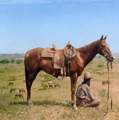Wandern am Hollywood Sign gefährlich (Klapperschlange)?
Hallo zusammen,
am Sonntag fliege ich in die USA und dort ist auch ein halt in Los Angeles geplant. Wir möchten dort am Hollywood Sign wandern gehen.
Nun habe ich gelesen das am Hollywood Sign wohl so ziemlich der geeignetste Ort ist um auf Klapperschlangen zu treffen😬
Reicht es wenn ich da normale Wanderschuhe anziehe oder kommen die da vom Biss her durch falls ich auf eine treten sollte
Vielen Dank für eure Antworten.
LG
juli1899
1 Antwort

Robuste Wanderachuhe sind auf jeden Fall besser als Flip Flops. Die Reiseleitung kennt sich sicher in der Gegend aus, und wird Euch instruieren. Eine Klapperschlange macht sich außerdem durch Rasseln bemerkbar, da kann man noch reagieren. Wahrscheinlich wird die Reiseleitung Euch sagen, daß ihr stärker auftreten sollt, denn durch die Vibration hauen Schlangen ab.

Ah ok:)
Dann halte Dich einfach an die Tips:
Photo By: Thommen Jose
General ResourcesHow to prevent snake bitesThis post was written by Professor David A. Warrell, who is currently International Director (Hans Sloane Fellow), Royal College of Physicians, London and Emeritus Professor of Tropical Medicine, University of Oxford, UK. Professor Warrell was the 2015 ASTMH Marcolongo Lecturer.
Most parts of the world are inhabited by venomous snakes. Snake-bites are a risk to rural inhabitants whose agricultural and hunting activities expose them and their children to this primeval environmental and occupational disease. Snake-bite is an important cause of death and disability in West Africa, Southeast Asia, the Indian sub-continent, Papua New Guinea, and the Amazonian region. There is good evidence that in India there are 46,000 and in Bangladesh 6,000 snake-bite deaths each year. Survivors often suffer persistent physical and mental morbidity. Meteorological factors affect the incidence of snake-bite. Annual peaks are during the rains (monsoons) and resulting flooding, associated with cycles of snake (reproductive) and human (agricultural) activity. Many bites occur at night and may be inflicted on people sleeping on the floor of their home.
Threat to travellersCompared to indigenous populations, travellers are exposed to a tiny-but-finite risk of snake-bite. Biologists collecting specimens in rain forests and other habitats richly populated with venomous snakes are at the highest risk but they are likely to be the best prepared (although even expert herpetologists have been bitten in the field). Ordinary tourists have been envenomed in urban surroundings (e.g. a German tourist bitten by a cobra in the garden of a hotel in central Bangkok and a Dutch man spat at by a spitting cobra that was in his bed in Malacca, Malaysia) and in the wilderness (e.g. a British woman bitten by a rattlesnake while walking on the main trail down the Grand Canyon and a schoolboy bitten by a fer-de-lance in a jungle camp in Costa Rica).
Prevention of snake-bites in travellersAwareness of risk is important. Find out in advance about the venomous snake fauna of the areas to be visited. There are many sources of information on the web, such as the WHO Venomous snakes and antivenoms search interface and other sites listed below. Be prepared to react appropriately if someone in the group is bitten (see below). Although snake-bite is such a small risk to most travellers, it is a common cause of anxiety and misunderstanding. Appropriate, well-informed reassurance can improve your enjoyment of travel and banish nightmares. If you’re travelling in a group that includes a designated medical officer, he/she should acquire basic knowledge about prevention and treatment.
Preventing snake bites: Do’s and Don’tsDo the following:
- Open and shake out sleeping bags, boots and clothing before use to dislodge snakes (and other animals and insects) that may have taken refuge inside.
- Check ground before sitting at the base of a tree.
- Wear boots, socks, and long trousers when walking in undergrowth or deep sand.
- Use a flashlight/torch at night when walking, collecting fire wood or relieving yourself, especially after heavy rain.
- Be aware that banks of streams, rivers and lakes are common snake haunts.
- Travel with a local guide who is much more likely to see camouflaged snakes.
- Sleep off the ground (hammock or camp bed) or use a sewn-in ground sheet and mosquito-proof tent or sleep under a mosquito net that is well-tucked-in under your sleeping bag. This will protect against night-prowling kraits (Asia) or spitting cobras (Africa) which often bite people while they are asleep on the ground.
Do NOT do the following:
- Do not disturb, approach, corner, provoke, attack, or attempt to handle snakes, even if they are said to be a harmless species, or appear to be dead (some snakes sham death defensively). Even a severed head may bite! If you corner a snake inadvertently, keep absolutely still until it has slithered away. Snakes strike only at moving objects.
- Do not attend snake charmers’ shows (their snakes may not be under control – a boy watching a snake charmer in northern Nigeria was fatally bitten by the performing Egyptian cobra).
- Do not put hands blindly down inside rucksacks (a British man in Sierra Leone opened his bag and was bitten by a green mamba that was inside).
- Do not put hands or poke sticks into burrows or holes. They often harbour snakes (small boys hunting rodents in Africa and Asia are often bitten by snakes).
- Do not put hands up onto branches or ledges that can’t be seen (a South African man climbing in the Drackenbergs was bitten on the hand by a Berg adder as he reached up onto a rocky ledge).
- Do not swim in rivers matted with vegetation in which snakes may be hiding or in muddy estuaries where there are likely to be sea-snakes.
Die Reiseleitung bin ich selber, wir fliegen zu zweit hin😄 Das Klapperschlangen sich in 90% der Fälle bemerkbar machen ist mir bewusst aber mir geht es um die restlichen 10%🙂 Also ob man wirklich mit Wanderschuhen bessere Chancen hat falls es dazu kommt :)